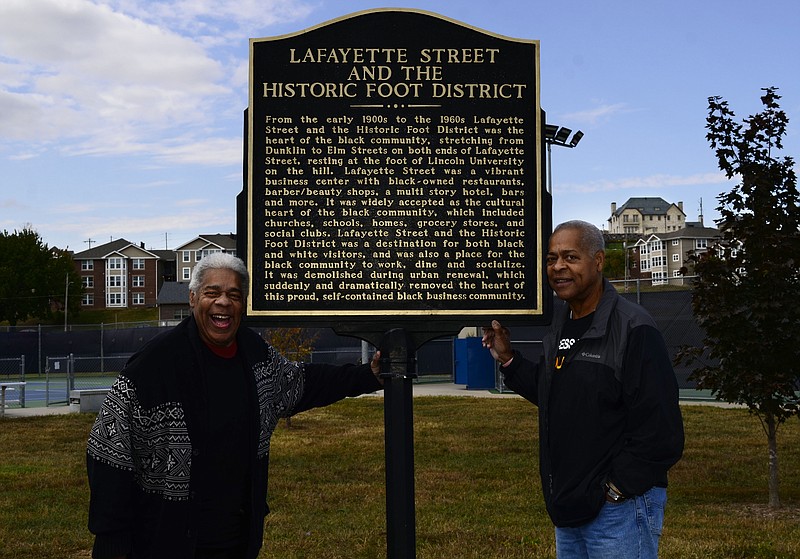The landmarks and the buildings may be gone, but the stories of a marginalized community that once lived, socialized and did business in Jefferson City is officially being recognized by the Capital City.
It is the first time Jefferson City has codified a district that has no present landmarks or buildings.
Applicant and Jefferson City resident Glover Brown said he desires to see the nomination serve as an example in other situations to recognize Black history in places where it has been erased.
Lafayette Street and the Historic Foot was named a historic legacy district Monday evening, a completely new codification that was created to recognize the area. Council approved the nomination during its regular meeting after suspending the rules to vote early.
Brown submitted his application in late September.
"This is a milestone," Glover said. "This is a situation many Black communities across the country face, and they are unable to establish Black historic districts."
A reasoning behind the difficulty to recognize it mounts to urban renewal projects, Brown said. He and his brother and sisters lived in The Foot during its flourishing times before the Campus View Urban Renewal project demolished the area.
Culture and economy around Lincoln University and several blocks of Lafayette Street thrived during the 19th and 20th centuries. The neighborhood was home to Black residents, becoming the heart of a community, who faced harsh restrictions during the era of Jim Crow laws and segregation.
"Because of segregation law, it was not only a travesty to the Black community but also the white community, because the white community did not have the richness that they were missing out on," Brown said.
No homes, businesses, cafes and restaurants remain, but the purpose is to preserve the story of The Foot and its residents or individuals who worked or visited there.
Brown said he hopes this effort is emulated in other parts of the country or even in recognizing history at the national level, such as, to gain recognition from the National Park Service, with the National Register of Historic Places.
"I'm hoping they will review what we've done here and be able to modify this and fit into their regulations, so that they can put the Black community on the National Register," Glover said.
Urban renewal projects were supposed to redevelop areas that had fallen into disrepair and promote more infrastructure like roads and highways.
However, many areas deemed "blighted" were often marginalized communities that hadn't been invested in. Some residents were promised better living circumstances, which were never fulfilled.
"There's a myriad of stories of Black history in this country," Brown said. "Most people only hear the negative and there's so much positivity in the history of Lafayette Street."
The district includes the 400, 500, and 600 blocks of Lafayette Street and the 600 block of Dunklin Street.
Brown is a singer and performer, but growing up, his parents owned a restaurant in the commercial district along the 600 block of Lafayette Street.
Several establishments and businesses from the 1940s and '50s were found in Victor Green's "The Green Book."
"The Green Book" published annually between 1936-66, covered places around the United States where Black travelers could safely sleep, eat or buy gas, without fear of discrimination or danger from white antagonists.
Brown's family owned a restaurant called The Tops at 626 Lafayette St. Known for its barbecue, The Tops was featured in "The Green Book." Brown recalled his parents working endless hours at the restaurant to keep up with high-frequency foot traffic. Tina and Ike Turner visited the restaurant along with at least one governor, he said.
"I'm hoping that the other members of the community can come forward and tell their family stories about what went on in The Foot area during segregation and Jim Crow," he said.
Brown said now that the district is official he hopes to gather a complete history shared by people who lived through it.
Glover's application named various establishments located in the commercial district: the Eldorado Club, Miss Leona's, Jack's Drug Store and the Booker T. Hotel. Notable residents of The Foot were Charles "Lefty" Robinson, Estella and John "Duke" Diggs, and Tony Jenkins.
--
View video of the city council handling the Foot District designation at https://www.youtube.com/watch?v=pOLx2x3TfJg&t=230s.

